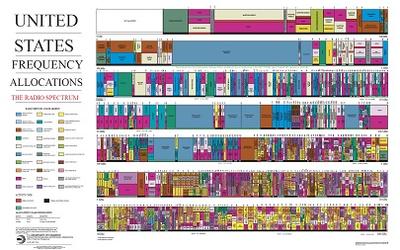What is Spectrum Sharing?
Spectrum sharing optimizes the use of the airwaves, or wireless communications channels, by enabling multiple categories of users to safely share the same frequency bands.
Spectrum sharing is necessary because growing demand is crowding the airwaves. Smartphones and appliances, military and public safety radios, wearable devices, smart vehicles and countless other devices all depend on the same wireless bands of the electromagnetic spectrum to share data, voice and images.
What is NIST’s Role?
As the nation’s measurement authority, the National Institute of Standards and Technology (NIST) develops measurement tools, data and methods to make fair, efficient spectrum sharing possible. This work supports not only the trillion-dollar U.S. telecommunications industry and its hundreds of millions of customers but also the U.S. military, which has spectrum in the 3.5-gigahertz (GHz) frequency band that is a focus of pioneering U.S. spectrum-sharing efforts.
NIST conducts research to understand the behavior of wireless systems and develops innovative ways to characterize spectrum activity in both indoor and outdoor environments. The goal is to quantify spectrum use and user behavior so that policymakers and industry leaders can make informed decisions based on NIST’s impartial analysis.
NIST’s work also promises to improve the performance and reliability of future wireless systems used in hospital operating rooms, manufacturing facilities, stadiums, public-safety settings, utilities and elsewhere.
NIST’s research focuses on two approaches to spectrum sharing: tiered access and coexistence.
Tiered Access
In tiered access, “smart” systems preserve a primary user’s right to exclusive use of certain frequencies and guide the capabilities of secondary users. Tiered access is used in the Citizens Broadband Radio Service (CBRS). NIST has played a major role in the development of standards, test procedures and certification tools for the CBRS.
NIST studies strategies for ensuring that secondary users don’t interfere with military users. For example, we are working to develop distributed sensor networks that could quickly localize and identify secondary signals in coastal zones, which may span thousands of square miles of diverse terrain.
We also are exploring the use of unmanned aerial vehicles (UAVs) outfitted with wireless sensors to monitor spectrum usage. UAVs could simulate naval radar from different points at sea, to provide reliable data for secondary users who would be expected to clear the airwaves when they detect the primary user.
Coexistence
With coexistence, multiple technologies use the same spectrum at the same time. This covers, for example, Bluetooth and 2.4-GHz Wi-Fi systems.
NIST has developed test methods and tools that regulators can use to certify users of shared spectrum to protect against interference with primary users such as the military. One such tool is the National Broadband Interoperability Test Bed, which supports coexistence research.
Advances in computing, signal processing and computational speed are enabling systems to work in cluttered environments, but coexistence requires that devices resist interference and avoid interfering with neighbors. NIST is developing ways to measure how well wireless devices coexist while operating in shared frequency bands.
Spectrum sharing may lead to disputes over frequency use in both space and time. Therefore, NIST is also developing forensics tools to monitor wireless spectrum use for the purposes of detecting and reporting breaches.
NIST also develops computer models and formulas to enable devices to share spectrum more cheaply and efficiently.






